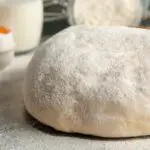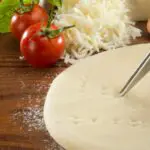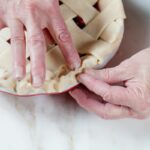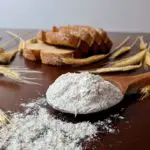Creating a pizza crust that is delectably thin with just the right amount of salt can be a test of balance. The right amount of yeast, flour, and enough moisture to pass the windowpane test.
That may not be enough as the dough can still break apart. That can happen to pizza dough as well as to bread and it is important to know what you can do to fix it.
Bread Dough
Bread dough can be a fickle creature yet there are ways of making it easier to prevent dough tears. Make sure that the dough is fully kneaded and avoid stretching it too much.
You only truly need the windowpane test if you are making pizza so you can create a dough with a better texture. That should mean more liquid for the poke test and you can even leave it to rest for a few hours.
Knead the dough properly for that crucial gluten network to make the dough easier to manage. That may mean a stand mixer though you can knead dough yourself but the period for dough rest should mean patience.
Try not to rush your dough yet knead it enough on a work surface to create that gluten network. Remember that the gluten development will continue during the rise so the dough should look smooth in a bowl and then expand.
Ensure that the dough has enough water to hydrate the flour completely. A dry dough will tear as it has insufficient gluten development.
Aim for 65% hydration and up which is 65g of water for each 100g of flour. That’s the ratio you need to consider for dough made with bread flour but also all-purpose flour.
Try to refrain from simply adding in more water when you think the dough requires it. Fold the dough, knead it for a few minutes, and that should prevent tearing.
If the recipe dictates a specific amount of water then stick to it but only add a tablespoon more water if the dough becomes dry.
With just a tablespoon, you can stick to the recipe and create a sticky dough that will bake well.
Bread Flour
To create good dough for bread, you need a protein-rich flour. Dough tears when gluten strands are not developed and you need the gluten development to produce a decent rise.
Bread flour comes with that protein yet pastry flour, cake flour, and old dough will create inferior bread. You can expect dough tearing if you commit to a low-protein flour.
Bread flour is specific for making bread due to the gluten development when you knead the dough. It should be easier to roll out, stretch, and then flatten if you need it to.
Pull it gently after kneading and you should see that the gluten has kept it elastic with few thin areas. The gluten strands will allow the dough to rise as the yeast can produce carbon dioxide while proofing.
Too Much Flour
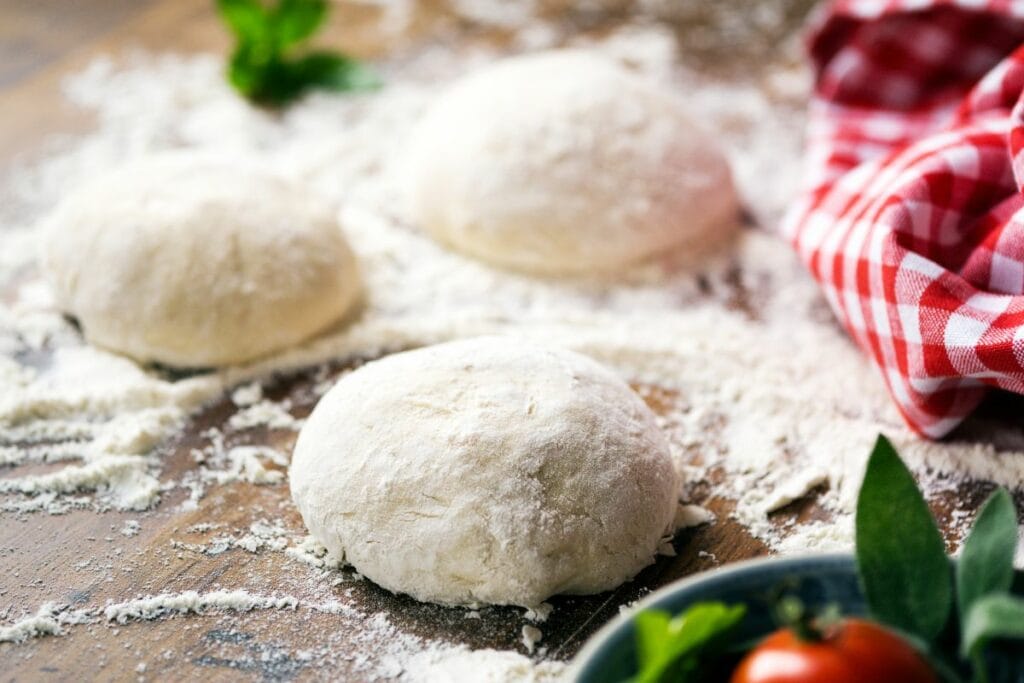
Good bread can mean enough moisture so try to refrain from adding more flour.
Make sure that the dough has enough water for enough gluten development so that it becomes smooth, elastic, and will not tear easily.
The gluten development is key as a dry dough will lack those gluten strands if there is too much flour.
Keep the balance right as more flour and over-kneading will not form good bread.
To develop gluten, the bread flour will have protein which then creates the perfect dough when combined with just enough moisture.
Be careful with your choice of bread flour as wheat flour can take in more than enough water.
Pizza Dough Tears
Once you have finished kneading, pizza dough tears can prove troublesome. You can fix it by creating a calzone or seal the dough by pinching it together and then fold it over.
Add more olive oil to create a more elastic, moisture-rich dough though be careful with your stretching technique.
To introduce more gluten, you can always knead pizza dough for a bit longer and leave it to relax as you could end up over-kneading it.
Final Thoughts
With experience, you should know when a ball of dough is just right and should not tear. The gluten strands will have developed from a sticky dough into a smooth one that, when rested, you can roll out for pizza or form into a form for a bread loaf.
Certain recipes will be quite strict on the amount of flour and water yet this is simply to create the right conditions for gluten.
Follow the instructions carefully but do not be afraid to add a little water or flour if you think it will prevent tearing.
Frequently Asked Questions
Why Is Kneading The Dough So Important To Prevent Tearing?
Should you fail to knead the dough enough after leaving it to rest then those gluten strands may not have developed. There are two tests to confirm whether the kneading has been sufficient.
The poke test will be passed if the dough springs back once poked by your finger. With the windowpane test, you should be able to stretch out the dough so it becomes thin enough like a window.
How Long Should You Leave Dough To Rest?
Once you have created a ball of dough, you should leave it alone for between five and fifteen minutes though you will require more time for proofing.
That will allow the gluten some time to relax which it will require after kneading or when removed from the fridge to hit room temperature.
The resting is important as you need to be patient and gentle with dough, even for pizza that you know you will have to work.
Should the dough prove to be hard work then you should leave it to rest a little longer and then come back to it.



